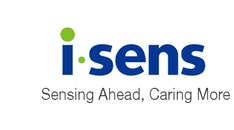
Blood Glucose Curve, a Useful Monitoring Tool to Detect The Somogyi Effect
When you have pets with diabetes, you want to know that the treatments are being effective in controlling their blood glucose. Sometimes, however, it can be difficult to tell.
There are several recommended methods for monitoring glycemic control. Noting changes in weight or appetite, water intake, and sugar in urine can all be helpful, but not always. Sometimes, a direct monitoring tool, like a blood glucose curve, can become handy in identifying problems that can go unnoticed by clinical signs.
What is a blood glucose curve and what are the benefits?
A blood glucose curve is a graph showing a series of blood glucose measurements. Starting from the time right before an insulin injection, blood glucose concentration is measured every 1 to 2 hours for the next 24 hours. The duration may be shortened to 12 hours if insulin is administered to the animal every 12 hours (twice a day). These readings are then plotted against time to show a line-curve.
This curve is effective in evaluating whether the animal’s body is properly responding to a given insulin dose. An assessment of a blood glucose curve can provide guidance on adjusting treatment plans. It is also useful in detecting low blood sugar levels, which may be difficult to spot when relying only on clinical symptoms. It is especially helpful in distinguishing between hyperglycemia and the Somogyi effect.

What is a Somogyi effect?
Understanding the blood glucose curve
The blood glucose curve can provide several important information. These include insulin’s duration of action, blood glucose nadir, and an estimate of average blood glucose concentration.
The nadir in the blood glucose curve is the lowest blood glucose reading in the graph. The ideal range for glucose nadir is between 100 and 150 mg/dL, or 5.6-8.3 mmol/L. The target average blood glucose concentration is below 250 mg/dL, or 13.9 mmol/L. For cats, the ideal range of blood glucose concentration shifts upward to 120-300 mg/dL.
For insulin’s duration of action, the goal is to have the glucose reading be within the ideal range (100-250 mg/dL for dogs, 120-300 mg/dL for cats) for the majority of the day. Ideally, this would be at least 20 hours in a 24-hour period.
Limitations of the blood glucose curve
Although the blood glucose curve is a direct way to monitor glycemic control, indirect monitoring (eg. clinical symptoms) can sometimes be more appropriate to assess your pet’s wellbeing. This is often due to practical reasons. For example, both diabetic and non-diabetic cats are prone to stress hyperglycemia. When they are exposed to stressful situations (e.g. going to the veterinarian), they can develop an acute increase in blood glucose concentration that sometimes lingers for several hours. As this can complicate interpretations, other monitoring options like testing for serum fructosamine concentrations or for glucose in urine are also used. It is important to take into account that all readings, whether blood glucose or glucose in urine, may fluctuate several times throughout the day, even for well-controlled diabetic pets. Therefore, it is best that owners look at the persistence of concerning symptoms or readings.
|
References: |
(Disclaimer)
The content of this article is intended to provide a general information and knowledge on the subject matter. The views expressed in newsletters, articles, and blogs in the i-SENS USA website are not necessarily those of i-SENS Incorporated, i-SENS USA Incorporated or our publishers. Medical or nutritional information on i-SENS USA website is not intended to replace professional medical advice – you should always consult a specialist with any questions about your specific circumstances.





Add a comment